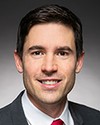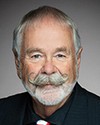We now have amendment G-2 as subamended. That's where we're going now.
Does anybody want to say anything before we vote on it?
Evidence of meeting #129 for Indigenous and Northern Affairs in the 44th Parliament, 1st session. (The original version is on Parliament’s site, as are the minutes.) The winning word was idlout.
A video is available from Parliament.
Liberal

The Chair Liberal Patrick Weiler
We now have amendment G-2 as subamended. That's where we're going now.
Does anybody want to say anything before we vote on it?
Conservative

Jamie Schmale Conservative Haliburton—Kawartha Lakes—Brock, ON
Can we suspend for two seconds, please? Thank you.
Liberal

The Chair Liberal Patrick Weiler
Great. Thanks for that.
Mr. Schmale...?
It doesn't look like anyone else wants to add anything at this time, so let's go to a vote on G-2 as amended.
(Amendment as amended agreed to on division [See Minutes of Proceedings])
(Clause 5 as amended agreed to on division)
(On clause 6)
Colleagues, the first amendment we have for clause 6 is NDP-15.
Just for colleagues' awareness, if it is moved, then—
Liberal

The Chair Liberal Patrick Weiler
Okay. I take that back. NDP-15 was withdrawn.
We will now move to amendment G-3.
Ms. Atwin, the floor is yours.
Liberal

Jenica Atwin Liberal Fredericton, NB
Thank you, Mr. Chair.
I move to amend Bill C-61, in clause 6, by replacing lines 29 to 33 on page 8 with the following:
(b) water and source water in a protection zone, if a First Nation governing body, the Government of Canada and the government of the province or territory in which the protection zone is located have
What that does is it creates that additional clarity around the definition of protection zones by removing “adjacent to”. We heard that from many witnesses. It's also further clarity around who is involved in determining the parameters of a protection zone. You'll see as we get there that it's about allowing indigenous communities to have that control. It responds to requests from first nations and legal experts.
Liberal

The Chair Liberal Patrick Weiler
Thank you very much, Mrs. Atwin.
Do any colleagues want to make an intervention before we go to a vote?
Mr. Melillo.
Conservative

Eric Melillo Conservative Kenora, ON
Thank you, Mr. Chair.
With removing “adjacent to”, could I ask the officials what effect that would have? I know it was mentioned that it was something brought forward by witnesses, but I think there is some concern around that.
Maybe I will let my question stand before I expand anymore. What would that removal of adjacency mean?
Director General, Community Infrastructure Branch, Department of Indigenous Services
Thanks for the question.
Protection zone, again, is defined by partners. Laws are defined by partners, and the zone is created by partners, so adjacency, in my mind, is secondary to that collaborative effort.
Conservative

Eric Melillo Conservative Kenora, ON
When the protection zone is defined—and we know that we can't do that at this point because there's a collaborative process that has to happen—I suppose from a practical standpoint, I'm confused about why adjacency would have to be removed.
I don't want to put Mrs. Atwin on the spot, but if she has any comments from witnesses she wants to turn to, I would appreciate it. We're talking about source water protection zones, of course, and I'm not sure of instances where nations would be drawing water from somewhere that is not adjacent to them. I'm just curious about the practicality of that.
Director General, Community Infrastructure Branch, Department of Indigenous Services
Thanks for the supplemental question.
As we've discussed and have heard from many, water sources in this country are large. They can be as long as some provinces, like the Athabasca watershed. Therefore, it's about utilization, and about collaboration and partnership. The agreements between parties would define that. It's less about geographic proximity and more about the agreement to align laws.
Conservative

Eric Melillo Conservative Kenora, ON
I have one more question, if I may, Mr. Chair.
Obviously adjacency was included by the government, and now the government is looking to remove it. I'm wondering if you could speak to why adjacency was originally included in this section.
Director General, Community Infrastructure Branch, Department of Indigenous Services
Would you like me to speak to why it was included?
Conservative
Director General, Community Infrastructure Branch, Department of Indigenous Services
I can't speak to that.
Director General, Community Infrastructure Branch, Department of Indigenous Services
No, not specifically. I think it was drafted as part of the efforts to table a bill based on years of collaborative efforts, and I'm glad that it is being assessed here today.
Conservative

Eric Melillo Conservative Kenora, ON
I can appreciate that.
I would assume that there would be some rationale for why it was included. I don't know if any government members can assist me with that or not, but it just seems strange that it was included by the government, and the government now does not want it included.
I'll let that question stand for now if we're unsure, and I'll cede the rest of my time.
Thank you.
Liberal
Conservative

Martin Shields Conservative Bow River, AB
Thank you, Mr. Chair.
Going back to what you said, by taking the definition out, you're suggesting that adjacent.... I think we would understand “adjacent”. He's adjacent to me, and you're not. You would suggest that the definition changes to.... If I'm talking about the Saskatchewan River basin, that goes from B.C. to Hudson Bay. Are we talking that broad here, when you take adjacent out? Is that what you're saying?
Director General, Community Infrastructure Branch, Department of Indigenous Services
Thank you for the question.
In my mind, it would be difficult to define adjacency as well. Water does flow. It could flow from me to you or flow from anywhere, including large bodies of waters, which we've talked about, including transboundary waters, which are international. I feel that the point is about the collaborative efforts, the agreement and the coming into force, and less about the geographic or geospatial relationships.